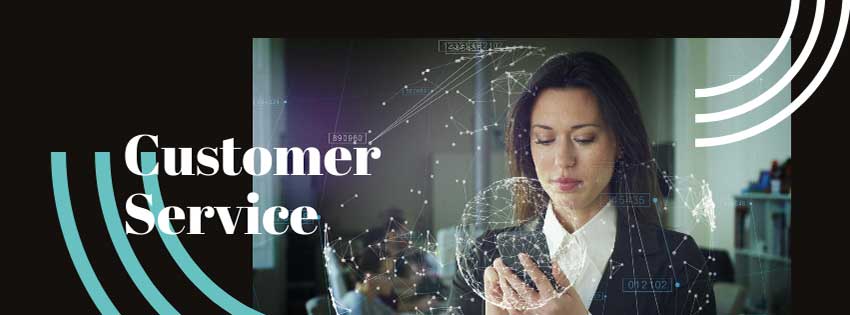Show:
How To Improve Your SaaS Startup Customer Experience
SaaS startups face several issues that limit opportunities for growth and success. Tech-minded developers who excel at creating marketable solutions often lack the marketing background and experience navigating customer relationships. Accelerated growth, delays in decision-making, and limited resources can all negatively impact what would be an otherwise successful enterprise.

The customer experience can be what ultimately makes or breaks a business. Here is everything you need to know about how to improve your SaaS startup CX for long-term success and sustainability.
Incorporate Strategic Automation
Created structured systems and protocols are what set successful startups apart from the failures. One of the most common errors leadership makes is not incorporating automation from day one. With limited human resources and so many high-value tasks to focus upon, taking a proactive approach with strategic automation can make a significant impact.
It’s vital to start considering the customer service experience from day one. As your SaaS is meant to solve problems for customers, creating a great customer service experience is a must. Incorporating strategic automation can help with that process. Using tools like robotic process automation (rpa) software can help streamline communications with customers, providing real-time analytics and calculations to keep the conversation moving forward. Using AI-driven chatbots can also help navigate frequently asked questions and provide high-level information before escalating to a human representative.
In addition to customer service communications, being proactive with automation can also help with digital marketing efforts. Setting up a smart email marketing platform before the company launches and creating automated flows will help your organization build a rapport while your team focuses on revenue-generating efforts. Using smart schedulers for social media and other outreach campaigns will also help you outsource and build an audience without dedicating too much valuable time to the process.
In essence, the strategic use of automation should be a part of your overall startup plan. Consider the SaaS platforms that inspired your vision, and use them accordingly.
Use Hyper-Personalization in Marketing Campaigns
Segmentation has been an integral aspect of digital marketing for years. Technology is ever-evolving, and consumers are exposed to more noise in the digital ecosystem with each passing day. It’s no longer viable for startups to cast a wide net and see who they catch; instead, they must niche down, so every communication feels personal and intentional.
Hyper-personalization is the use of data to create what feels like a tailored customer experience. While segmentation groups customers by interests, dislikes, or generalized demographic data, hyper-personalization drills down into the minutiae. For example, Amazon uses hyper-personalization to assess what a customer has browsed, clicked, or abandoned to make recommendations about similar items. The ultimate goal is to reach a place where you can predict what customers want based on their individual behavior and create a customized experience based on that data.
Of course, hyper-personalization is more difficult to implement in a B2B setting than marketing to an end-user in a B2C environment — which makes up the majority of SaaS startups. Your startup can accomplish this task by incorporating AI into marketing tools and using personalized imagery, video content, and remarketing based on captured data.
Push for Proactive Customer Service
Traditional customer service took a reactive approach, responding to issues as they arose instead of getting ahead of them to prevent the issues from arising. Taking a proactive approach helps improve the customer experience by reducing frustrations associated with the brand, boosting confidence in your product offering, and building a trusting customer relationship.

For an SaaS startup, the customer adoption phase can be a tumultuous period. Your customer is trying to determine whether or not a product is useful while navigating the learning curve. A reactive customer service approach would have your team wait for a customer to reach out and ask questions. A proactive approach would have your team reaching out to offer training, support and advice beforehand.
As a result, your customer will experience less frustration or overwhelm while shortening the learning curve. This proactive approach allows the customer to see the value in the SaaS offering, especially during a trial period.
Smooth Your Friction Points
Customer friction refers to sticking points within the customer journey that make it difficult for a customer to complete a transaction. These friction points could range from struggles with communication (i.e., not being able to contact you to ask questions), website loading time, navigation difficulty, or unclear product value.
There are several ways to identify friction points. For online transactions, follow the customer journey and look at trends regarding when and where they leave your site. If customers are leaving your landing page without buying, you may lack enough transaction points, or you’re failing to express the value and benefits of your product in a clear and concise way. Conversely, if they’re falling off during the transaction, the issue could be due to complications with the check-out process or second thoughts on pricing strategy.
Search terms with your brand can also indicate an issue with your customer journey. Customers searching for reviews or social proof show that you don’t include enough social proof in your online presence or marketing copy. Search terms about FAQ pages or customer service indicate that it’s too difficult to navigate your website to find pertinent information.
Collect Both Positive and Negative Feedback
Prospect and customer feedback are invaluable when shaping the customer experience for your SaaS startup. Yet, it’s imperative to look beyond positive feedback and absorb negative or constructive feedback as well. Look for trends in negative feedback to indicate where your customer experience can improve.
In addition to assessing data from customers, you should hold a post-mortem with those who didn’t transact. Consider sending a brief survey or email request to those who didn’t buy your product to learn why. Again, look for trends in the feedback. If the common reason is that pricing is too high, there’s likely a disconnect in how your marketing expresses value. The more you know about pitfalls in the sales journey, the better you can make it.
Capture and Review Analytics
Finally, capture and review your analytics. Make this a built-in part of your monthly review process. Look for personalization opportunities, friction points, timing data and so on, to make data-driven decisions.
With these strategic focal points, you can elevate your customer experience during the early days of your SaaS startup, setting you on a trajectory for success.

 Return to Previous Page
Return to Previous Page








